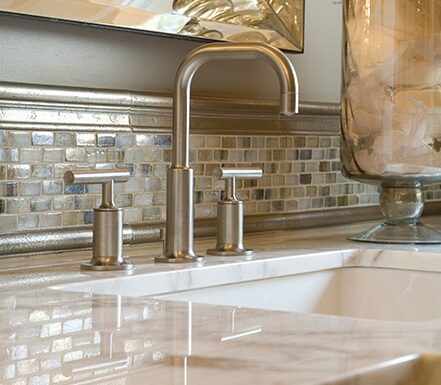The History of Vitreous China Sinks
Vitreous china is a ceramic material utilized for centuries in bathroom fixtures, including sinks. The first vitreous china sinks were produced in the late 1800s, with the advent of new manufacturing techniques that allowed the production of large, thin-walled ceramic pieces.
During the early 1900s, vitreous china sinks became increasingly popular as a durable and hygienic alternative to traditional ceramic sinks. The material was also used to manufacture toilets and other bathroom fixtures.
In the mid-1900s, vitreous china sinks became more widely available and affordable, and they started to be included in a wide range of bathroom designs. During this period, manufacturers began experimenting with different sink shapes and styles, such as the integrated sink-countertop design.
In the late 1900s, advances in technology and automation allowed manufacturers to produce sinks with more intricate designs and patterns. Some of the new designs included the undermount sink and vessel sink.
In recent years, there has been more of a focus on the environment and sustainability in the industry. As a result, some manufacturers have started incorporating more sustainable materials and practices into producing vitreous china sinks.
Overall, the history of vitreous china sinks has been marked by a steady evolution in design, manufacturing techniques, and materials, as well as a growing awareness of the environmental impact of production.
Environmental Impact of Manufacturing
Vitreous china is commonly used ceramic to manufacture sinks and other bathroom fixtures. The manufacturing process for vitreous china involves mining raw materials such as feldspar and quartz, which may impact the environment. In addition, the manufacturing process requires a large amount of energy and water, which can also impact the environment.
The production of vitreous china sinks also generates waste in the form of slurry and dust. This waste material must be properly disposed of to avoid environmental damage. Moreover, transporting raw materials and finished products can also contribute to air pollution.
On the other hand, vitreous china is a durable and long-lasting material, which can reduce the environmental impact over time by reducing the need for replacement. Moreover, some manufacturers are taking steps to minimize their environmental impact by implementing more sustainable practices in their manufacturing process, such as recycling and reducing water consumption.
Overall, the environmental impact of manufacturing vitreous china sinks can vary depending on the manufacturer’s practices, and it’s important to consider the entire lifecycle of the product when assessing its environmental impact.
The coating on our vitreous china sinks makes them great at resisting spills, scratches, and other imperfections. In addition, the high gloss enamel is highly durable and sanitary, creating a stain-resistant surface. Making them a great choice when it comes to picking out material for your kitchen or bathroom countertops.





